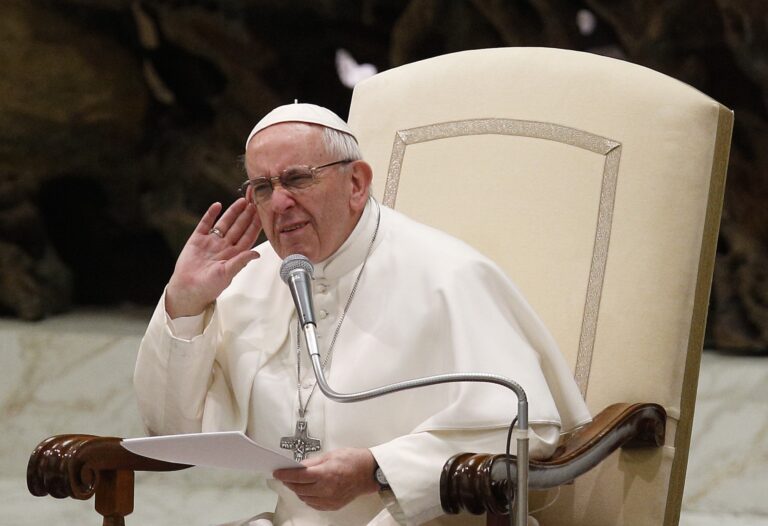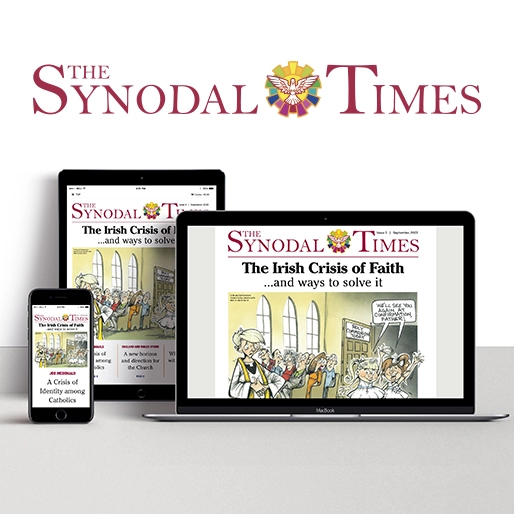My expectations for the coming Synod on Synodality are both a lot and a minimum. How are these in any way aligned? What sense does such a seeming contradiction make? Let me make recourse to what experience I have with synods to help explain my own both limited and expanded hopes for the ecclesial gathering this October.
Credentials
I have attended as an accredited journalist three Roman Synods, the most important of which was the Extraordinary Synod of 1985, convoked to celebrate the 20th anniversary of the closing of the Second Vatican Council. It did indeed celebrate, but it also scrutinised and critiqued the post-conciliar legacy as well as highlighting the ascendency of many key curial prelates and global hierarchs who would come to define the John Paul II papacy.
The ’85 synod was not a reactionary event, although the appearance shortly before it began of the publication of Cardinal Joseph Ratzinger’s Rapporto Sulla Fede (The Ratzinger Report: An Exclusive Interview on the State of the Church) provided the perfect backdrop for a tough ecclesiastical assessment of the Council and its perceived inadequacies. The cardinal and the Pope made sure that the ’85 synod would not be a paean to the Council, its architects, liberal purveyors, revisionists, and leftover periti.
It was an exciting event but showcased the tight control exercised by the synod authorities— implementing the mind and mandates of the Pope at every level and—although this is understandable to some degree given the nature of Roman governance and the strong personality of Karol Wojtyla—it created an environment so tightly scripted with pre-determined goals that as a gathering summoned to engage and discern it ended up being neither.
Of course, the ’85 synod was not the first held in Rome since the re-institution of the synod in 1965 as a form of periodic, although always only advisory organ, for governance in the Church. But it was my first encounter with this instrument of collegiality and I wasn’t impressed.
Bishops
The interventions of the bishops were constrained both in time and in content, the heavily redacted summaries of the circuli minores (small language-based discussion groups) were infuriatingly cryptic and unhelpful, and the chaos often visited on the Vatican press office as it struggled to deal with an inquisitive and increasingly cynical corps of journalists and scholars, created an intense atmosphere where ecclesiastical spin became the order of the day.
But, and this is the sweet irony, the event was still a wonderful example of the kind of generative activity that comes when Catholic minds collide in the interests of enlightenment: lively discussions in the trattorias of Rome, candid off-the-record interviews with bishop-delegates and their theological advisors, corridor revelations far from the oversight of press briefing officials, grand liturgies open to all—voting bishops, consultors, auditors, journalists, and guests—and new friendships forged, both professional and spiritual.
Still, the deficiencies of the synod machine remained in evidence for the other synods I covered during the John Paul II papacy and, if anything, they proved more irritating because the Church appeared not to have learned anything from the process. Too little trust; an excess of control.
And now we have Francis with his love of parrhesia (free speaking in the Spirit) guaranteeing a different experience of synod. I have not had the opportunity yet to attend a Bergoglio-inspired synod, although I have followed the synodal process and documents they produced in the previous synods he summoned.
But being onsite for the Synod on Synodality brings with it feelings of acute anticipation and fervent hopes all tempered by the resurrection of memories of previous synodal moments with their aggravating defaults.
Will this Synod be a bousculade, a mad scramble, or will it be a galimafrée, a ragout of diverse morsels? It will be both. And that is its saving genius.
Making a mess
Francis is not averse to making a mess. In fact, he has encouraged Catholic youth to do precisely that and he has spoken frequently of the image of the Church as a reverse pyramid, with the episcopacy, including the Bishop of Rome, at the bottom. Now that is a radical re-structuring.
This Synod on Synodality was prefaced with a level of consultation beyond all previous consultations: surveys, questionnaires, diocesan reports, continental reports, academic conferences, elaborate data-gathering initiatives, massive media coverage, and, not surprisingly, resistance from some, a backlash from others, with arrestingly frank denunciations of Francis and his presumed efforts to reduce the Catholic Church to a liberal Protestant offshoot, a parliamentary assemblage, or a wildly equalitarian cult full to the brim with woke sentiments.
These are caricatures, calumnies really, and they will be exposed as such by the success of the synod itself: there will be no heretical proclamations, no sundering of the apostolic college, no schism in-the-making, and no forsaking of the creative traditions of Catholic intellectual and spiritual life.
A flowering Rather, it will be a flowering of the Spirit and there will be healthy contestations of ideas, political lobbying (and, yes, the Vatican is not uninured to political stratagems, as history can amply attest), some platforming and positioning as various groups make compelling arguments for their positions regarding justice issues, women and ministry, presbyteral reformation, the moral gravity of planetary peril due to depredations of the environment by centuries of human misrule, and other matters as well. A possible Pandora’s box?
The alternative to risking a free and open discussion of ecclesial issues facing the Catholic communion is withdrawal, retreat, entombment. For Francis, such an option runs counter to the will of his Lord.
This Pope is fearless in heeding the Gospel injunction to speak to all nations; he knows that Catholic tribalism runs counter to the expansionist vision of the evangelists and he knows that the boundary lands are where we often encounter Jesus.
Francis is calling us to a pioneer Catholicism—an imaginative exploration of new territories of mind and spirit. Will the Synod sink under the weight of unrealistic expectations? Will it implode because of bureaucratic chaos and papal mismanagement? Or will it be the richest opportunity since the close of the Second Vatican Council to make sense of our Christian call in a darkening landscape?
For me, it will be both a bousulade and a galimafrée.
Michael W. Higgins is Basilian Distinguished Fellow in Contemporary Catholic Thought, St Michael’s College, University of Toronto, and Distinguished Professor Emeritus of Catholic Thought, Sacred Heart University, Fairfield, Connecticut. His book on the Synod—The Thirty Days that Shook the Church— will be published by Paulist Press.



